“Fly Me to the Moon” Screenwriter Rose Gilroy Reimagines the Apollo 11 Moon Landing
As we just celebrated the 55th anniversary of the Apollo 11 lunar landing on July 16, director Greg Berlanti’s latest offering is a stylish, charming Space Race rom-com that salutes the 400,000 people who worked on the program. Starring Channing Tatum and Scarlett Johansson (who pulls double duty as producer), Fly Me to the Moon (in theaters now) is based on a story by producer Keenan Flynn and writer Bill Kirstein and crafted by screenwriter Rose Gilroy. A delightful throwback to the classic Hollywood movies of yore, the visually lavish dramedy has a lot going for it, the most compelling of which may be in how it celebrates our commonality rather than our differences.
“It’s wild that we all came together to pull off what was impossible. All these young people—many of the engineers were in their mid-20s—dedicated themselves to a cause. I think it’s a patriotic and non-divisive film that touches on so many themes,” Gilroy says of her feature debut. It captures the sense of idealism and dedication of a generation of American explorers, scientists, and military men who came together to accomplish the impossible. “I was very inspired by NASA and what we had accomplished during the Apollo era. We wanted to highlight the importance of that accomplishment.”
Shot with full cooperation from NASA, the film includes never-before-seen archival footage and input from several flight directors who lived through this monumental time. Although it is not meant to be a historical retelling, Gilroy and the producing team took great pains to research the details so they could include as much real history as possible. “Research is a huge part of my writing process. You can find a lot of great details that really honor the time. At some point, the movie takes a different fictional turn, but it always has that original, fun nugget of truth, which allows for comedy and romance,” she reveals. While all the characters are fictional, many are based on an amalgamation of real-life characters and incidents.
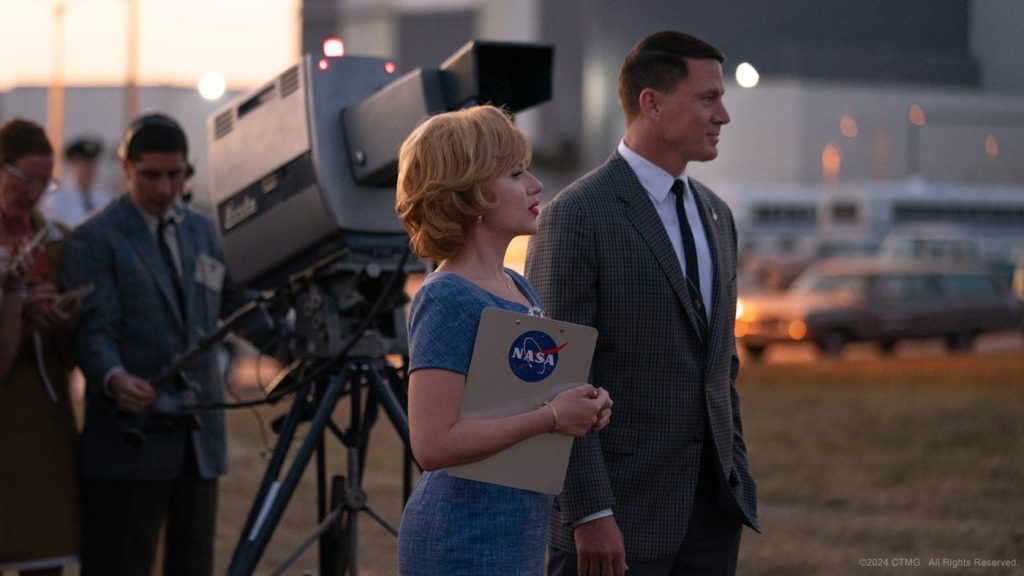
With eight months to go before what would become the greatest triumph of the Space Age, NASA launch director Cole Davis—Tatum’s true-blue, decorated former Air Force pilot—is under tremendous pressure to deliver when things at Cape Kennedy keep falling apart following years of budget cuts. When we first meet Cole, his no-frills, pragmatic approach is on full display, using a straw broom to detect a liquid hydrogen leak when no one else knows what to do. “I read a lot about NASA’s Wild West culture at the time, the innovative thinking and flying-by-the-seat-of-your-pants mentality that all the flight directors had,” Gilroy says. “In one of the oral transcripts, a flight director mentioned a cowboy Air Force guy who picked up a broom, started testing for the leak, and it caught on fire, so that became the ‘broom method.’ When I read that, I just knew it had to go into the script! It really captured the culture and spirit of the time. I have to credit Greg – he added so much heart to this. In the earlier versions, it didn’t open with that scene. But it’s such a perfect introduction to Cole.”
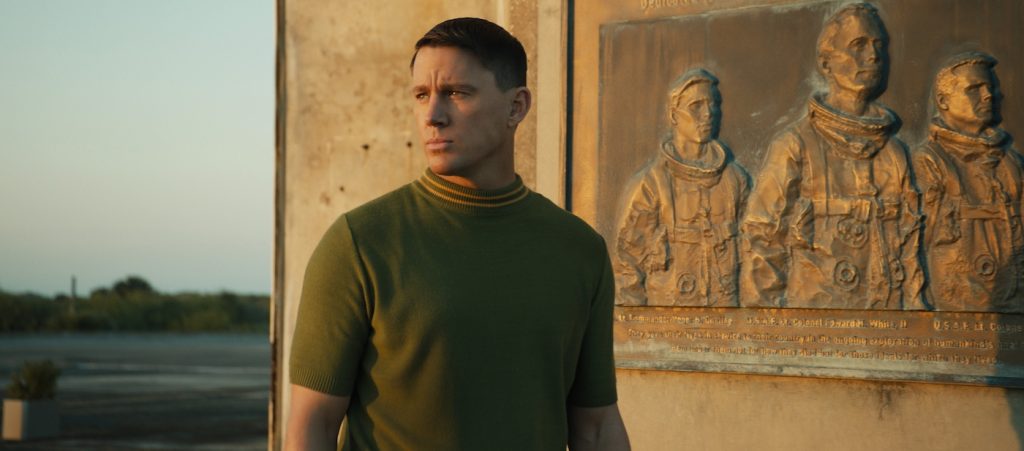
Unfortunately, the space program is plagued by waning public support amidst escalating tensions over the Vietnam War. In comes wily marketing maven Kelly Jones (Johansson), who is hired by a shady government official, Moe Burkus (Woody Harrelson), to sell the lunar mission to the citizenry and secure more Congressional funding. Partly based on real-life journalist and NASA consultant Julian Scheer—who developed a plan for media coverage of the space program—the always-resourceful Kelly will stop at nothing to inject much-needed pizazz into the program’s public image.
“NASA’s public affairs really had to market the Moon to the American public. Keenan and Bill initially based Kelly’s character on Julian, and it evolved into marketing,” Gilroy says. “At the time, it was hard for journalists to cover the space program since it was so complex. So, they brought Scheer in, who suggested broadcasting the Moon landing on live television. There was intense debate between him and the flight directors. Even though we took some liberties with how she sells the Moon, the original idea came from real life. Advertising also lends itself to the thematic question of what lines you’re willing to cross just to sell something.”
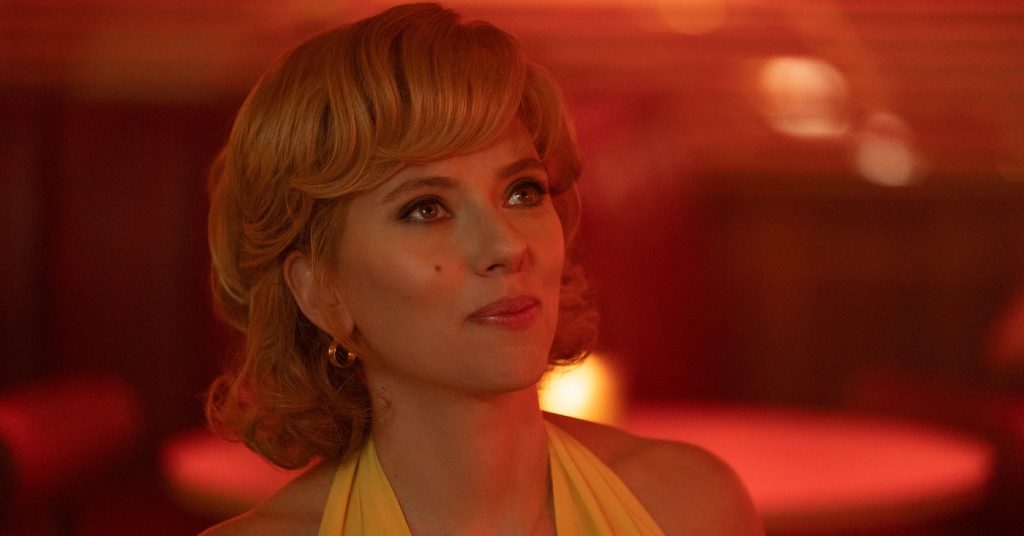
After an adorable meet-cute at the famous Wolfie’s Restaurant, sparks fly between Kelly and Cole. However, her penchant for embellishing the truth puts her at odds with the straight-arrow Cole, who refers to her as a “fancy ad shark.” Johansson was instrumental in shaping Kelly, as Gilroy points out: “Scarlett kept going back to ‘How can they bend towards each other?’ so they can both learn from each other and improve. Kelly starts out standing for nothing—she’ll believe in whatever she’s paid to believe. Then, she meets someone like Cole, who is very genuine and deals with life and death and sacrifice every day. Somehow, they have to get along. What better way for her to learn than to be around people who do the right thing,” she elaborates. Thanks to the effortless chemistry between the two leads, their diverging personalities amplify the humor, drama, and tension. “I’m still pinching myself; Scarlett and Channing are absolutely magnetic, the best chemistry that you could ask for. And they’re so fun together and funny, too!”
After Kelly secures product placement deals from major corporations, Cole refuses to “turn this ship into a flying billboard.” Things get worse when she overrides his operational security concerns to add a 15-pound camera onboard the shuttle for a live telecast of the historic moment. “This really happened,” says Gilroy of the stunt that came from Scheer on the real mission. “It was a real concern that broadcasting a mission from outer space could go horribly wrong.” Part of Cole’s fierce focus and solemn demeanor are driven by the Apollo 1 mishap two years prior, where a flash fire in the command module killed three astronauts on his watch. “Cole represents several real-life flight directors who grappled with the grief and still push through with the looming deadline to launch Apollo 11. They had to fight through their grief to honor the dream,” Gilroy says of the guilt that still consumes him.
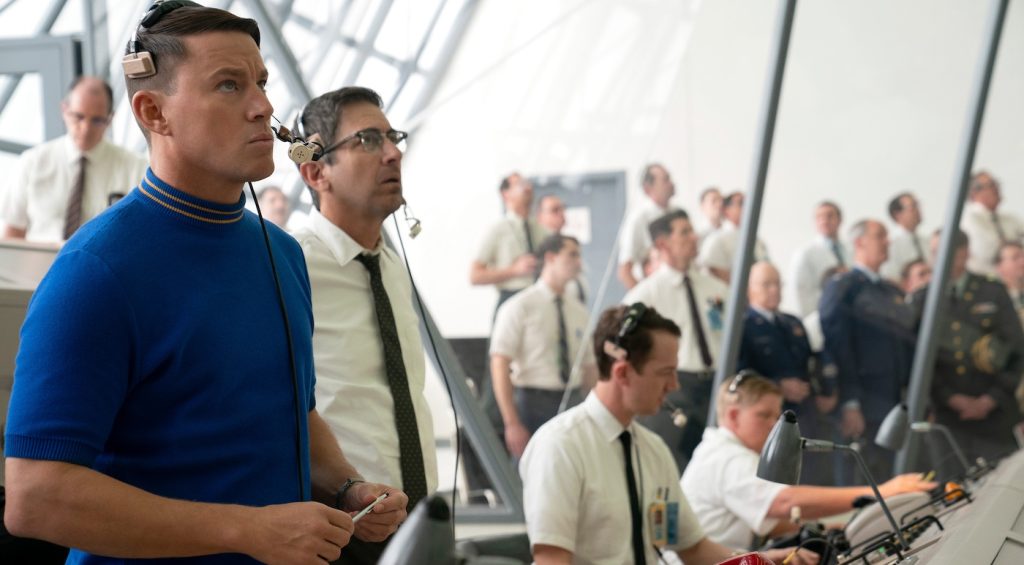
Toying with the decades-long conspiracy theories that the Moon landing was faked, Gilroy’s script turns up the heat with dual narrative stakes. Now that the funds are flowing again and the public fully embraces the program, failure is not an option in America’s quest to beat Russia to the moon. So, Moe blackmails Kelly into shooting an Ersatz lunar landing that will replace the broadcast’s live feed (but with audio from the real mission piped in). “The Moon landing has been done so many times, so we took a fun approach to add some tension. You’ve seen it so many times, and yet you don’t know how it’s going to end. It’s the story you know from the perspective you don’t.”
One of the central themes is about the importance of truth and honesty. When they have to convince some Senators to vote for continued funding, Kelly adopts different [fake] accents depending on which one she is wooing at any particular moment. The toughest to win over is the ultra-conservative Senator Vanning (Joe Chrest), who thinks that science is part of the “war on religion in this country” and that NASA’s ships are “punchin’ holes in the sky, disruptin’ God’s work.” This element of the story also takes a page out of history. “At that dinner with Cole and Kelly, the Senator mentions the provocation of pride, alluding to the Apollo 1 tragedy,” Gilroy says. “The debate about how religion factors into the Moon landing was real. There was a Senator—not Vanning and from a different state—who was against the Apollo program, and that included many pastors as well. They blamed science for the floods and other natural disasters occurring at the time because they thought, ‘How could humans dare destroy God’s art?’”
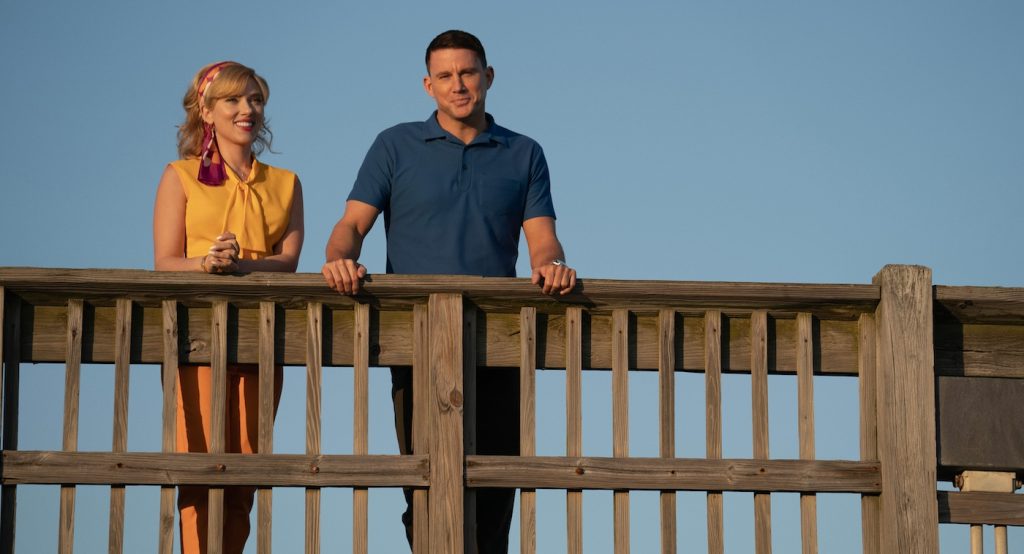
“There was a famous press conference, where a pastor grilled the flight directors and engineers about this, and one of them responded with the Bible verse about Jacob’s Ladder,” Gilroy reveals. In the film, Cole ultimately wins Vanning over with his own faith, inadvertently citing one of Mrs. Vanning’s favorite Psalms. “Cole tells him that when the astronauts returned from space after seeing God’s creation from afar, they believe in God even more, not less.” That was a rare moment where Kelly’s slick tactics took a back seat “as Cole wins Vanning over with something real. It’s a powerful moment where Cole makes the point of being honest while Kelly sits next to him sporting a fake Louisiana accent.” As he later says to her, “You can win people over just by being yourself.”
A breath of fresh air with its stirring optimism and aspirational sensibilities, this is the uplifting story we need to remind us of what this country can do when there is true commitment to a shared goal.
For more upcoming films from Sony Pictures, check out these stories:
“Bad Boys: Ride or Die” Editors on Mixing Comedy, Action, Tender Moments—and Barry White
“Paddington in Peru” Trailer Finds the Beloved Bear on an Amazonian Adventure
How “Bad Boys: Ride or Die” DP Robrecht Heyvaert on Creating the Ride of a Lifetime
Featured image: Scarlett Johansson and Channing Tatum in “Fly Me to the Moon.” Courtesy Sony Pictures.



